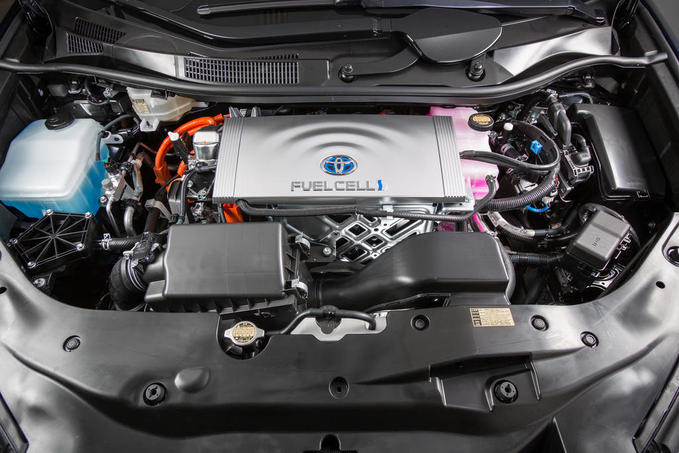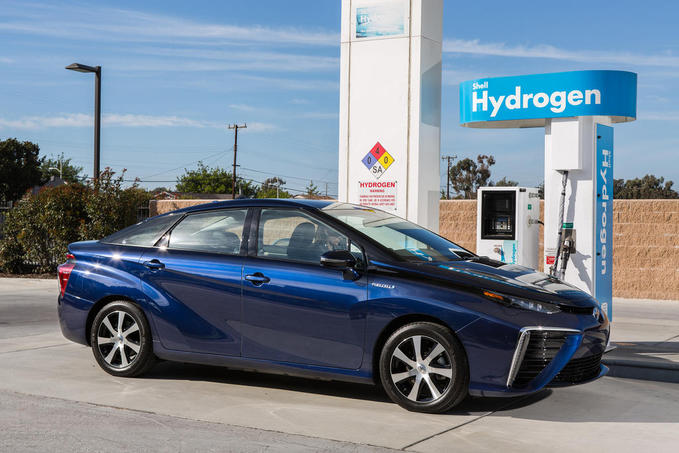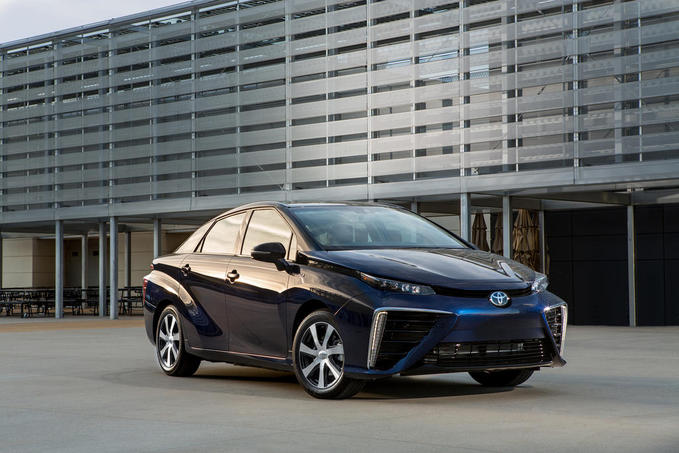The Toyota Mirai may not be the prettiest product to debut in November, but it presents the potential for a brighter future with the promise of cleaner air and less dependence on oil.
Here’s how the Mirai works in a nutshell: there are two tanks under the rear passenger seats that can be filled with hydrogen gas. The gas is sent through something called a hydrogen fuel cell stack that mixes oxygen with the hydrogen. That creates a reaction that generates electricity to charge a small battery that feeds an electric motor powering the front wheels. The combination of hydrogen and oxygen creates pure water, which is purged periodically. The rate is about 100 cubic centimeters per mile of travel. For perspective, you would need to drive almost five miles to generate enough water to fill a pint glass.
Driving the Mirai
Get the Flash Player to see this player.
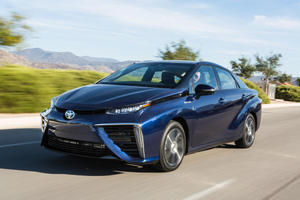
Despite featuring regenerative braking, the Mirai’s braking feel isn’t aggressive like most electric cars. While other battery-powered cars feature braking systems that can bring the car to a stop without you touching the pedal, the Mirai doesn’t feature this disorienting feel.
See Also: Five Things You Need To Know About the 2016 Toyota Mirai
The Mirai is easy to get into and drive. You won’t need to be primed on the science kit under the hood. However, the cabin is overwhelming and tries too hard to push the idea that this is a futuristic vehicle. There are a too many screens, charts, graphs and buttons on the dashboard.
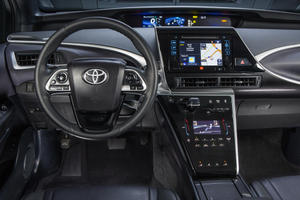
In spite of its questionable interior design, the car is well appointed with soft touch materials and comfortable leatherette seats. There are also other high-tech standard features including blind spot monitoring and lane departure warning in addition to lane-collision warning and adaptive cruise control.
Paired to that puzzling interior is a unique exterior design. It combines the familiar teardrop shape of a Prius with a sharper, edgy design. Whether it’s pretty or not, the car stands out and commands attention.
The Big Picture
We’re used to the smell, sound and feeling of an internal combustion engine as it systematically transforms tiny explosions into directional movement. Electric cars are much newer to the market, but there’s a simplicity to them that’s as relatable as a remote-controlled toy car.
But internal combustion cars and electric cars have drawbacks: EVs have limited range and long recharge times, while internal combustion vehicles create polluting tailpipe emissions.
Hydrogen cars like the Mirai combine the benefits of both electric and gasoline powered cars and eliminates certain drawbacks of those current-generation products. It’s more environmentally friendly than gas powered cars and like an electric car it doesn’t pollute the air while driving. With a range of 300 miles, the Mirai isn’t as limited as even some of the most advanced electric cars. Unlike EVs, hydrogen cars can be refuelled in about five minutes at a pump much like a gas- or diesel-powered vehicle as long as you can find a pump.
The Fuelling Problem
Right now, California has 13 research hydrogen fuelling stations, nine public stations and an additional 18 that have been funded and are expected to be operational in the next few years. Toyota is helping to finance these operations, but it’s still a tiny percentage compared to the number of gas stations available in the state. Sure, there’s potential: the state of California also requires 33 percent of all hydrogen to be produced via renewable resources. But most companies are meeting this percentage by getting methane from a landfill or wastewater treatment plant and feeding it into a centralized steam methane-reforming facility. This methane is blended with natural gas, which is also methane, but a fossil fuel. What this all means is that we’re not yet ready for the real, sustainable future and may not get there without heavy government subsidization.
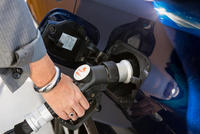
Leasing is also an option at $499 per month for 36 months with $3,649 down at signing. Lease customers may be eligible for a $5,000 state rebate. Toyota will also cover the cost of hydrogen fuel for the first three years of ownership, although that’s partially because hydrogen fuelling isn’t simple. There isn’t yet an accurate way to measure and charge for it. While the car isn’t outlandishly expensive, it’s the fuel infrastructure that will be the most limiting factor for now.
The Verdict:
The term “hybrid” is practically synonymous with the Toyota Prius. That’s a big win for Toyota and a success that could be repeated with the Mirai as the face of hydrogen cars. While many of us aren’t going to be able to buy or live with a hydrogen car at the moment, the Mirai proves that Toyota has the right idea, but only if the rest of the world is ready.







